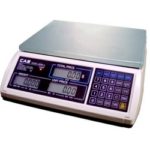Handbook 44 from NIST spells out rules and regulations for the weighing industry and separates weighing devices into five accuracy classes. Depending on the number and value of scale divisions, equipment can be either class I, II, III, III L, or IIII, with Class I having the highest precision. All Legal-for-Trade scales fall under one of these five classes.
Table 7a of Handbook 44 breaks down the description of each class. Class III states: “All commercial weighing not otherwise specified, grain test scales, retail precious metals and semi-precious gem weighing, animal scales, postal scales, vehicle on-board weighing systems with a capacity less than or equal to 30,000 lb, and scales used to determine laundry charges.”

Basically, what it’s saying is anything that doesn’t fall elsewhere would go in this weight class, providing the device meets the criteria for the quantity and size of divisions. Class III covers many different types of scales, making it a bit of a catch-all. Produce scales would be one type of Class III application. While some jewelry scales are Class III if the resolution is appropriate for the application, meanwhile, a more precise jewelry scale could be Class II. It all depends on the number of divisions and capacity. Precision laboratory devices usually fall under Class I.
At the opposite end of the spectrum is Class III L, which covers heavier capacity on-board applications, truck scales, livestock scales and railroad scales. Class IIII applies strictly to axle scales and wheel loader devices for highway weight enforcement.
Get Started With Central Carolina Scale
At Central Carolina Scale, our philosophy has always been to work directly with customers to help them choose the proper weighing equipment. If you have specific questions about scale classes, call us at (919) 776-7737 or email us at info@ccscale.com.

